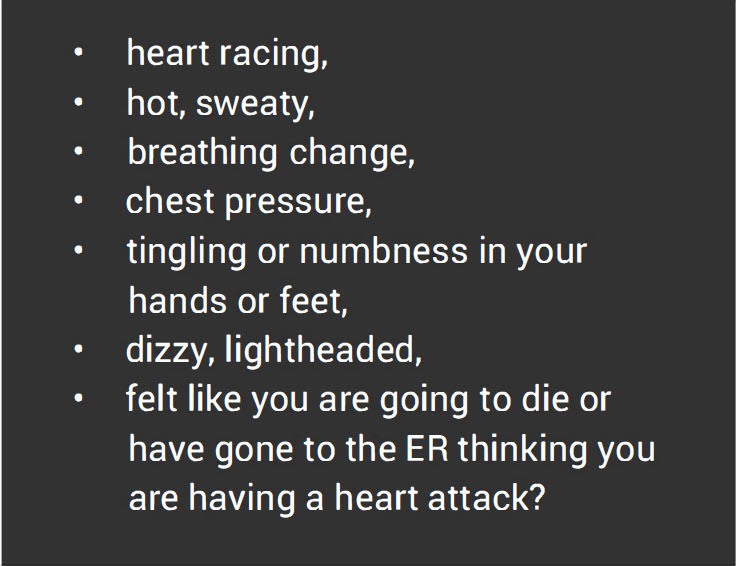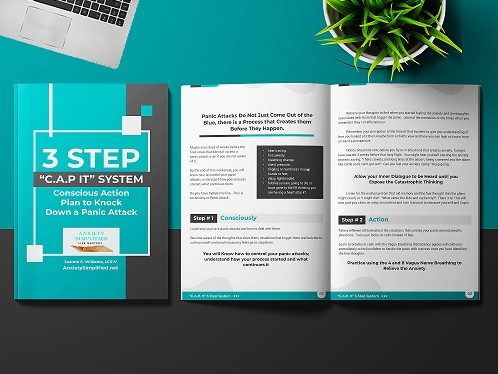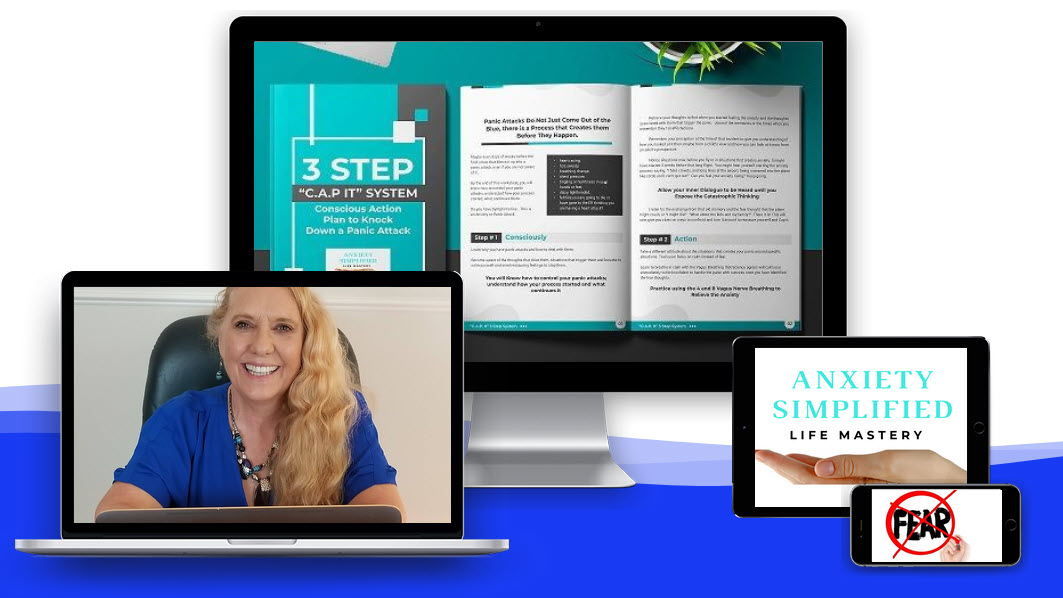As a 30+ year Mental Health professional, I hear this issue a lot with clients. They will be upset, or their spouse is upset because their anxiety spoils a trip, or the client will refuse to go on a trip unless they can drive to feel in control of the driving experience.
Many times a client will make up elaborate excuses to friends or family, why they can’t go on a trip, just to avoid having to tell something the real reason they don’t want to go is because they don’t like the feeling that driving anxiety gives them and the fear that they have an anxiety attack and avoidance seems like the only way to deal with the fear or the fear of embarrassment over someone seeing them having an anxiety attack.
6 Ways to Conquer Driving-Related Anxiety and Panic

1
Why does anxiety attacks while driving occur?
The most common reason for having anxiety attacks while driving, is that a past experiences of an accident or seeing an accident is now conjuring up fears, that this drive will have the same outcome.
I also see that many clients will start with an anxiety in one area of their life, like a fear of crowds and it expands into other areas of their life like driving.
The treatment for the anxiety attacks is to examine what they are thinking or telling themselves in the moment of that fearful experience that contributes to driving anxiety to give yourself reassurance to repattern the old belief with a new one. To build a belief that you can do something to change this fear. For instance, you could say, I have had more good experiences driving than bad, so lets concentration on the good ones instead of the bad. Question yourself, which one will make you feel more reassured? Hold firm with yourself since you don’t know which one will come true, so let’s focus on what we want to happen.
Mostly what I hear from clients are a worst-case scenario thought about what COULD happen; We will have an accident and die or be maned for life. This thought creates fear or anxiety enough that this discourages them from the experience at hand. Once they start down this imagined path of negative thinking, they are actual strengthening the fear. Or they are reinforcing the possibility that something bad might happen, with a self-fulling prophecy. Instead of using their logic to look at probabilities to help their brain find other ways to look at the situation to reassure themselves.
This article discusses driving anxiety causing anxiety attacks and what may cause it. It also explores symptoms, treatments, and alternative strategies that may help someone manage the condition. If this issue interferes with your life experiences, please reach out to a professional for help.
2
What is driving anxiety?
A person may experience emotional distress while driving and avoid certain situations on the road or driving in general because they fear they will have a panic or anxiety attack and hurt themselves or others. They haven’t found a way to resolve them, so they avoid driving if possible.

3
What Exactly Is a Panic or an Anxiety Attack?
Consider being on a crowded highway with cars coming on and off the freeway ramps and you are startled and become overwhelmed. Suddenly, your heart starts racing and pounding in your chest. Your throat closes and you begin to feel dizzy. You cast a glance at the window and see an accident, fearful that you'll lose control. These are just some of the symptoms of an anxiety panic attack while driving. Some call them anxiety attacks, it is the same symptoms.
Anxiety or Panic episodes start quickly and usually last less than 20 minutes to half an hour.
A panic attack can cause any of the following symptoms:
- Palpitations, a racing pulse, or a rapid heartbeat
- Sweating
- Shaking or trembling
- Feeling out of breath
- Choking sensation
- Pain or discomfort in the chest
- Nausea or stomach pain
- Dizziness, unsteady feeling, feeling lightheaded, or faintness
- Feeling cold or hot
- Tingling or numbness
- Unreality or feeling disconnected from yourself
- The fear of losing your sanity and control
- The fear of dying
Panic or Anxiety attacks are rather common. In fact, approximately 28% of adults will suffer from a panic attack at some point in their lives. Many people who experience a panic attack never have an episode again.
4
What Can Trigger a Panic or Anxiety Attack while driving?
From my experience as a 30-year mental health professional. I see that there is a progression of fearful thinking that leads to anxiety that leads to a panic attack, days or weeks before the actual anxiety attack that the client is unaware of the progress and that is why they seem to come on suddenly.
Most of my clients have a worst-case scenario rumination about situations that trigger a anxiety attack before the attack happens.
Certain risk factors for panic attacks have also been identified in studies. These include the following:
- Being a woman
- Being under the age of 60
- Having a mental illness, such as depression
- Having been diagnosed for anxiety disorder
- A stressful life event, such as a loved one passing away.
Anxiety attacks may also run in the genes or learned from parents’ fears that are passed on. Thus, if you experience panic attacks, chances are your parent or any of your siblings suffer from it as well.

5
6 Ways to Conquer Driving-Related Anxiety and Panic
1. Focus on the road ahead.
Driving-related anxiety often leads you to think ahead to the whole trip. As you drive, you might keep imagining the scariest parts ahead. It ends up being a lot to manage—not just the road right in front of you, but your entire drive.
None of us can manage a whole trip in our heads—we must take the road as it comes. Being present and not planning every moment will help you focus on the present instead of the future. We can manage the piece of road we’re on right now, reassuring yourself that everything is fine in this moment.
It takes practice, of course, since the mind wants to jump ahead and make sure things will be okay. Focusing on sensory experiences can help to ground your attention in the present, like seeing the road in front of you and feeling your hands on the steering wheel.
2. Challenge catastrophic assumptions.
Panic can lead to believing that a disaster awaits you on the road, even if it’s never happened on all your previous drives. Our fear is good at threatening us that “next time it’s going to be really bad”—that you’ll panic and “go crazy” or “lose control.” And yet in every instance so far, your worst fears haven’t happened. One study showed that 95% of all worries never came true and the other 5% we can prepare for.
But none of these events is the true fear behind panic—it’s about what happens next or the unknown. Our fear tells us that if we’re in these kinds of situation, the panic COULD cause something undeniably awful to happen. In reality, the most likely thing you’ll experience if panic or anxiety gets really intense is, fear for a few minutes and then it will pass. Learn to tolerate the discomfort of the anxiety by sitting with it. While staying present with it, it will dissipate, and you will be proving to your mind that you can handle the situation with confidence.
By moving through the fear scenarios our minds tell us, we can stop letting it control our behavior. Become aware of what your automatic thoughts are and the fear triggers that start the progression of anxiety and you will feel in control of your driving anxiety.
3. Dismiss emotional reasoning.
Sometimes our fears give us valuable information that helps us avoid danger. However, our fears can also be unfounded. A common thinking error when our anxiety is high is that feeling like I’m in danger is evidence that I’m in danger.
For many people, “feeling is believing,” says psychotherapist and former airline pilot Captain Tom Bunn. “If I feel it, it has to be true.” He noted that people prone to panic tend to interpret physiological symptoms of anxiety as danger, whereas “some people enjoy the physiological arousal, like getting on a roller coaster.” Use both your emotion together with your reasoning to get the best of both worlds.

4. Beware of psychic equivalence
Most of the time we can tell the difference between what’s real and things we imagine. But when we’re intensely anxious, this distinction can dissolve—a process known as “psychic equivalence.”
Under stress, you might default to believing that your emotional experience represents your true perception. When people worry about having a panic attack, that can cause enough stress that the message to the body is we are in danger and then your body reacts to protect you. They forget that their mind doesn’t know the difference between real and imagined and your anxiety is imagined, since it is not currently happening.
Intense fear can lead to a powerful form of emotional reasoning, in which the driving-related disasters you're afraid of feel like reality instead of fears. When you're relaxed you may know perfectly well that panic doesn't make you faint, for example, but might think you're on the verge of fainting when panic hits, however, if you can breathe in through your nose to the count of 4 and out your mouth to the count of 8, you can’t faint, since you are getting oxygen directly to the brain. The 4 and 8 breathing, has been medically proven to send a calming chemical into your entire system to calm you immediately, so it’s less likely to trigger psychic equivalence.
5. Eliminate avoidance
Every time we avoid what we’re afraid of we are strengthening it. Our brains learn that what we’re avoiding must be dangerous—otherwise, why would we avoid it? You can try to talk yourself down and reason with your fears, but nothing retrains the brain like direct experience. Confronting the situations that triggers anxiety is the most powerful way to teach your nervous system that it doesn’t have to sound the panic alarm and you can handle it. In CBT we call this approach “exposure treatment.”

6. Drop safety behaviors as you are ready
The final step for most people in dealing with panic or anxiety attack driving, is to drop behaviors that are intended to prevent panic, or avoid a disaster if panic strikes. Common examples when driving include things like:
Asking for reassurance about the possible consequences of panic on a bridge, even though they’ve been assured countless times that what they're afraid of almost certainly won’t happen.
- Doing repetitive Internet searches on the possible consequences of panic while driving
- Checking traffic before getting on a bridge to make sure it’s not backed up
- Avoiding driving during rush hour so there’s less chance of getting stuck in traffic
- Previewing a new route to see if it includes bridges or tunnels.
- Researching the bridges they’ll have to drive over on a new route
- Avoiding certain lanes on a bridge
- Driving too fast on a bridge to “get it over with” (ironically an un-safety behavior)
- Driving unnecessarily slowly because it feels safer
The problem with safety behaviors is that they give your brain the false impression that you would be unsafe without them. "Good thing you checked traffic," your brain tells you, “Or that might have gone badly." As a result, you continue to feel that driving is extremely dangerous and must be closely managed so nothing terrible happens. Instead, make the intention and focus your brain of the having a great drive.
Final Word on anxiety attacks while driving.
If your anxiety or panic episodes become regular or interfere with your life, it is a good idea to seek professional care. You can then concentrate on learning skills on how to calm down before an anxiety attack or after an anxiety panic attack, better managing them, and coping with the associated worries to stop anxiety attack while driving.
Stop Panic Attacks Now
This course is video based to be able to re listen to over and over again with a workbook to follow again or reuse you conquer one trigger you can see your progress to feel you can do this!
Click this link to take your first steps out of having panic attacks forever. Take a >Video 3 Step Course on how to Crush Panic Attacks with Joanne Williams, LCSW< Learn from a 30-year mental health professional. In this course, the 2nd step teaches the 4 and 8 Vagus breathing, to get that immediate calming.
Contact Joanne Williams for a free 10-minute consultation on you best next step at 760-485-6784.
Disclaimer: This article is by no means a replacement for medical attention or therapy, please take care of yourself and ask for the help you need.

